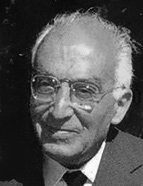

‘Of Pedro’s sons, only one really deserved attention: the Master of Avis’ (Arnaut, 1967, p. 8). In line with the points of view set out above, Armando Luís de Carvalho Homem summarises the contribution made by the undergraduate and doctoral theses to the study of the political crisis at the end of the 14 th century as follows: ‘Drawing attention to the political importance of the sons of Pedro I and Inês de Castro, and particularly to Prince João, as the individual in whom significant sectors of the political society saw, in 1383, the “ way out of the (dynastic dimension) of the crisis ” ; the emphasis on the Beira nobility and their role in Trancoso, a battle whose outcome is considered fundamental in weakening the Castilian army and, consequently, an episode that could in no way be overlooked in the pre-Aljubarrota months and inseparable from the military resolution of the crisis’.
In order to write his doctoral thesis, SDA worked on a scholarship from the Instituto de Alta Cultura [Institute of High Culture] in various foreign archives (Archives of Simancas, National Library of Paris, Archives of the North, of Lille). In them, and in the Portuguese archives, he compiled a vast amount of documentation that supports a narrative that is literarily contained, apparently confined to the factual. However, the facts are interwoven with a broad knowledge of human experiences.
SDA ’ s work and teaching practice were situated in a frontier zone between the tradition marked by theologians and historians with a German and French scholarly background and strong ideological constraints, on the one hand, and the innovation in thematic approaches and methodologies that began to take hold in the secluded environment of the Modern History Seminary, on the other, where undergraduate theses on historical demography and economic history were being written in the 1960s. At the same time, doctoral theses were being drafted according to the new European historiographical currents, which were to be argued in the Sala dos Capelos in the 1970s, namely A vida económica e social de Coimbra de 1537 a 1640 [The economic and social life of Coimbra from 1537 to 1640 ] , by António de Oliveira.
This work is financed by national funds through FCT - Foundation for Science and Technology, I.P, in the scope of the projects UIDB/04311/2020 and UIDP/04311/2020.
